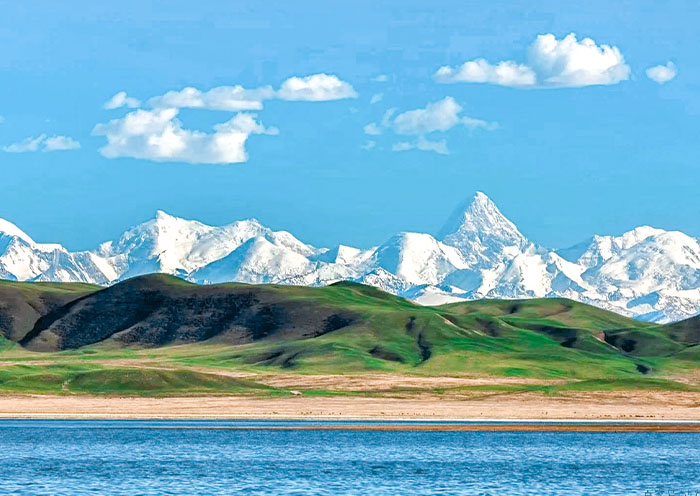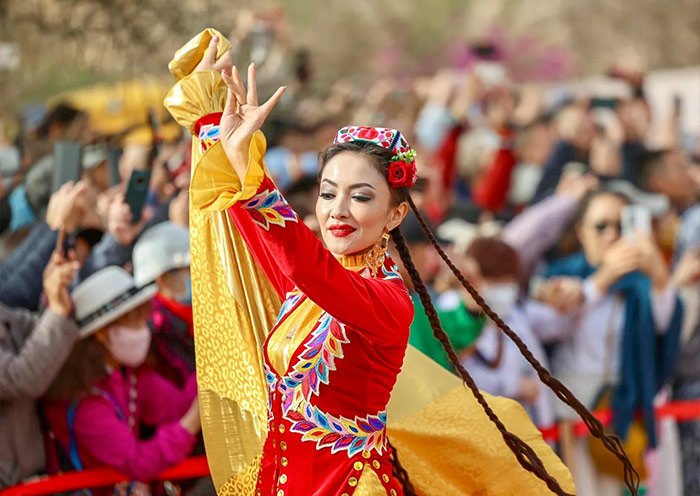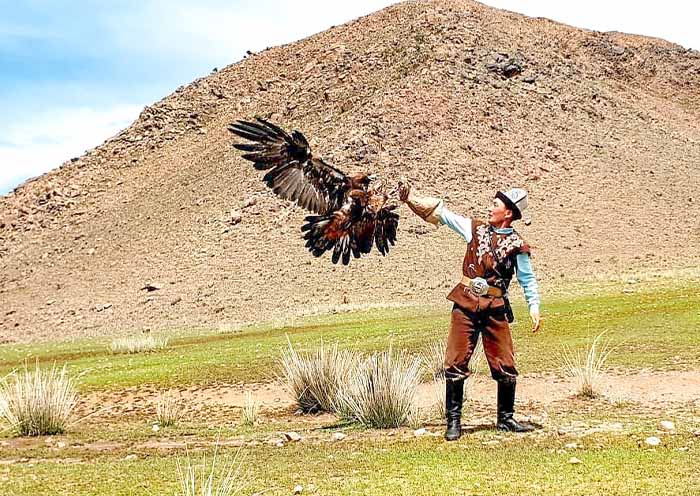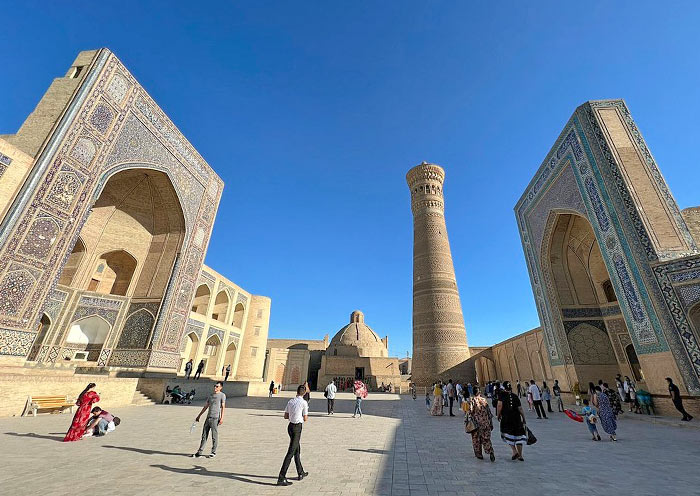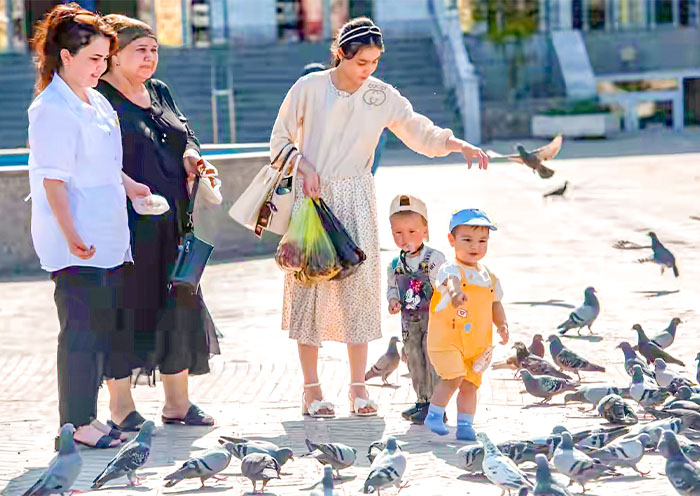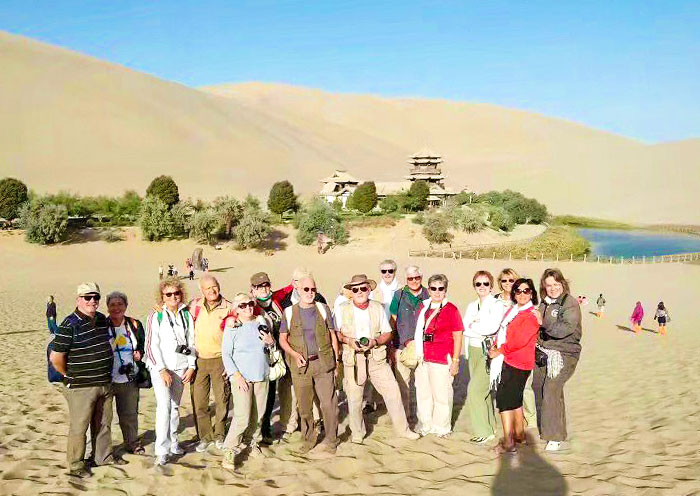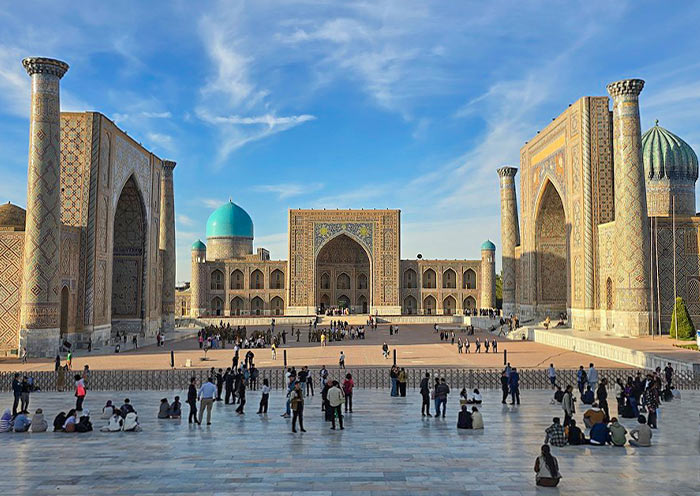The itinerary brilliantly captured the essence of the Silk Road, from Uzbekistan's majestic architecture to Tajikistan's rugged mountains and Turkmenistan's surreal desert craters. Our guide's expertise brought history alive, and our driver ensured a smooth, comfortable journey throughout. Impeccable service and an unforgettable deep dive into Central Asia's heart. Highly recommended!
12 Days Xinjiang to Kyrgyzstan Overland Tour: Silk Road to Nomad’s Land
- Highlights
- Itinerary
- Price
- Trip Notes
- Accommodation
- Photos
- Reviews
Crossing the Tianshan: China to Kyrgyzstan in 12 Days
Fascinated by overland adventure? Be brave and take the off-the-beaten path with us! Explore two worlds in one route - from the ancient Silk Road in Xinjiang to the nomadic paradise of Kyrgyzstan.
Trace the footsteps of traders and travelers on this 12-day overland tour from China’s Xinjiang to Kyrgyzstan. Begin in Urumqi and Turpan, exploring the Heavenly Lake of Tianshan, the ruins of Jiaohe, and the colorful bazaars of Kashgar. Discover the legends of Samarkand’s sister cities and walk through centuries of Silk Road history.
Cross the dramatic Torugart Pass into Kyrgyzstan - a gateway to vast grasslands, alpine lakes, and authentic nomadic life. Ride along the shores of Issyk-Kul, watch golden eagle hunt in Bokonbayevo, and witness the centuries-old art of yurt-making in Kyzyl-Tuu Village. End your adventure in Bishkek, surrounded by the snow-capped Tian Shan Mountains.
This route perfectly combines culture, nature, and cross-border adventure. Whether you seek history, photography, or authentic nomadic encounters - you’ll find it all on this journey.
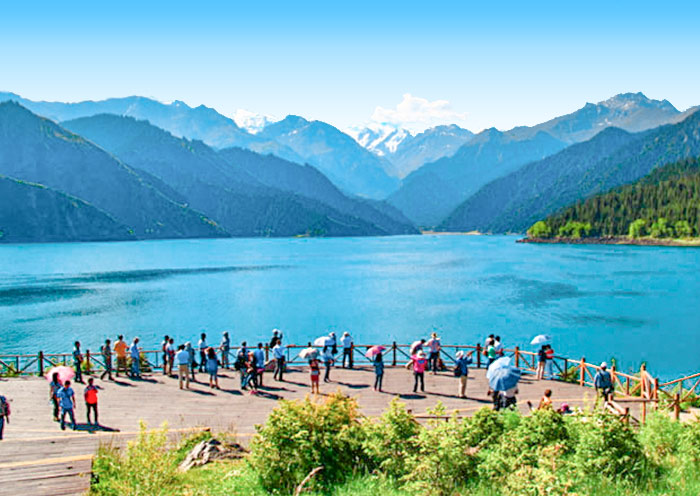
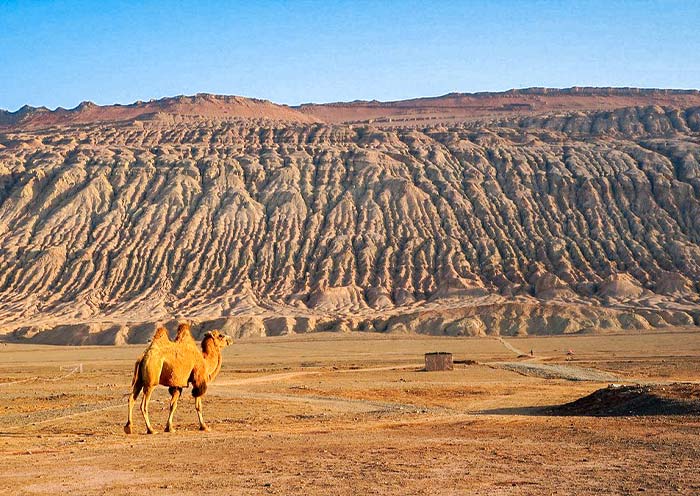
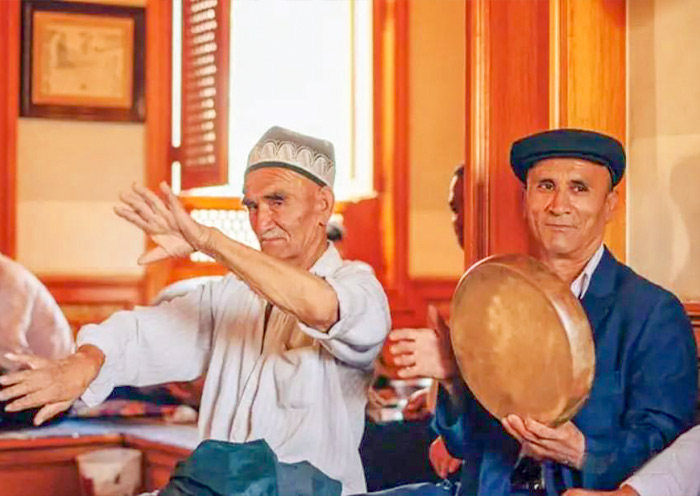
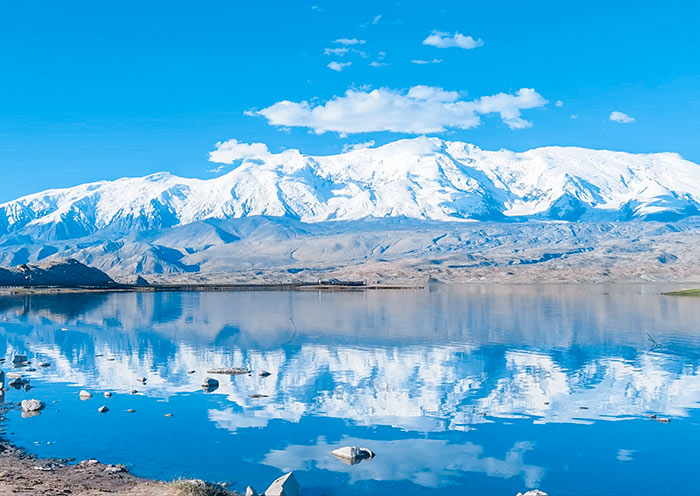
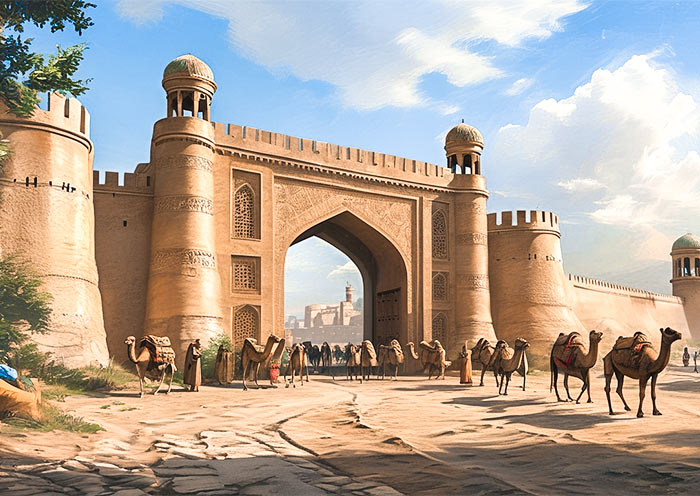
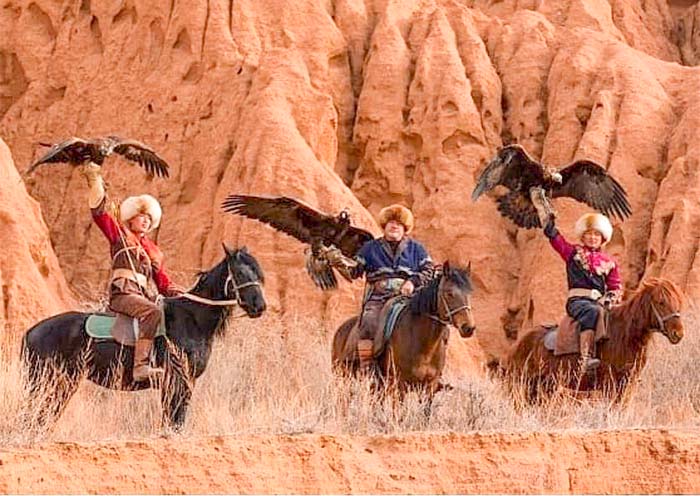
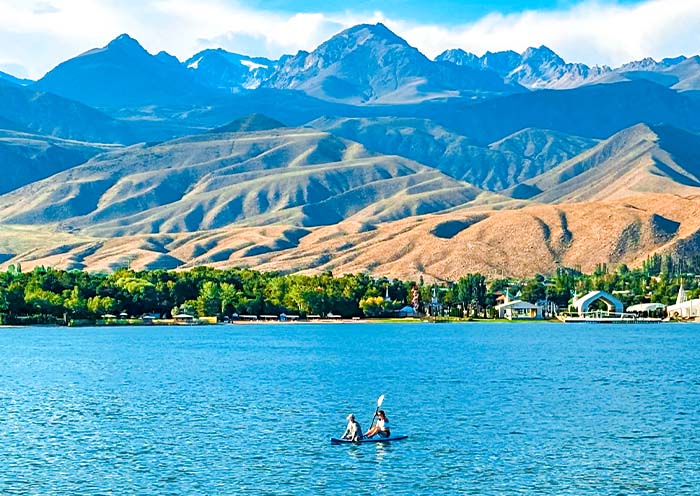
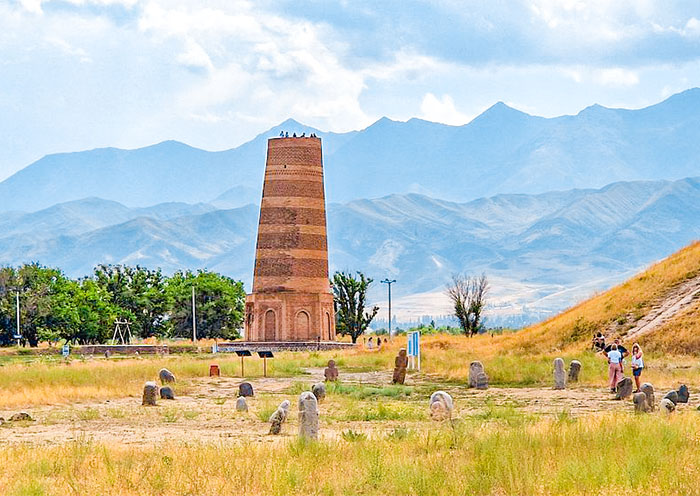
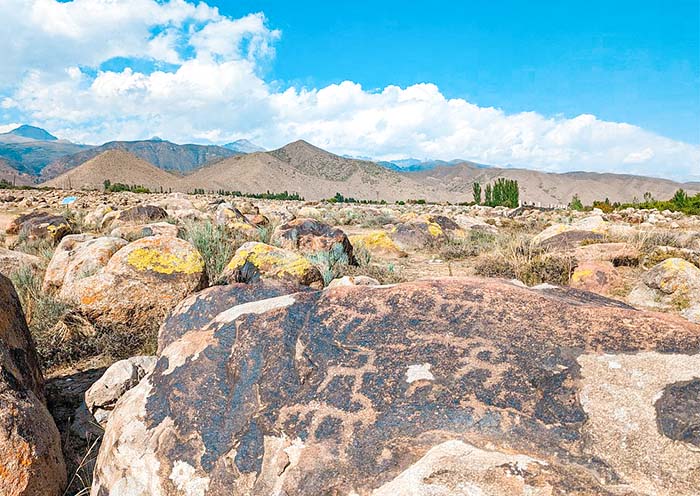
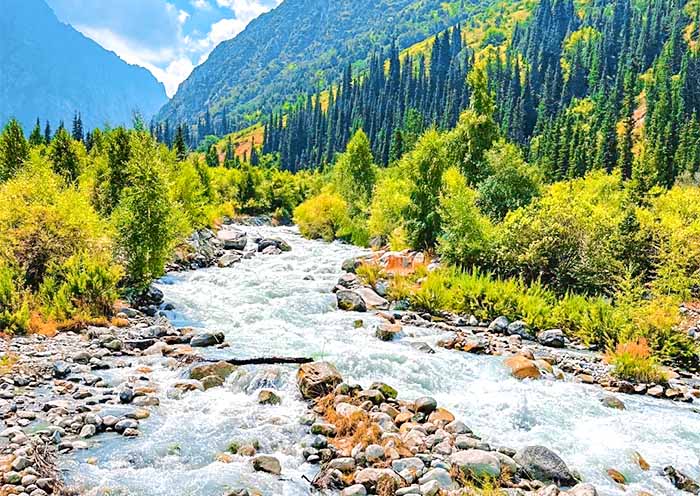
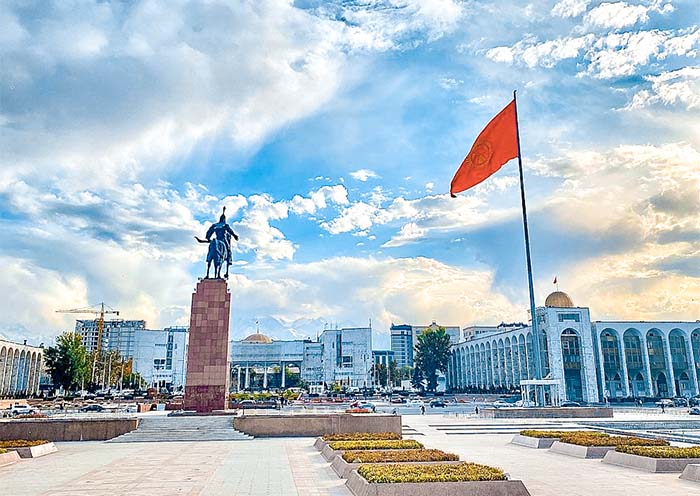
Itinerary at a Glance
Urumqi (2 Days)
Xinjiang Regional Museum, Heavenly Lake of Tianshan
Turpan (2 Days)
Flaming Mountains (drive-by), Tuyoq Uyghur Village, Bezeklik Thousand Buddha Caves, Jiaohe Ancient City Ruins, Karez System, Emin Minaret
Kashgar (2 Days)
Kashgar Old City, Id Kah Mosque, Ancient Tea House, Livestock Market (Sunday Only), China-Pakistan Highway (Karakoram Highway), Baisha Lake, Karakul Lake, (Kongur Tagh, Kongur Tiube, and Muztagh Ata) Distance View
Torugart Border Crossing (0.5 Day)
Kashgar – Torugart Pass – Naryn (Approx. 6–7 hours drive)
Naryn, Kyrgyzstan (0.5 Day)
Bokonbayevo, Kyrgyzstan (0.5 Day)
Eagle Hunting Demonstration in Bokonbayevo
Kyzyl-Tuu Village, Kyrgyzstan (0.5 Day)
Yurt-Making Experience in Kyzyl-Tuu Village
Cholpon-Ata, Kyrgyzstan (1 Day)
Issyk-Kul Lake, Petroglyphs Museum
Burana Tower, Kyrgyzstan (0.5 Day)
Visit Burana Tower when drive to Bishkek
Bishkek, Kyrgyzstan (2.5 Days)
Ala-Too Square, Statue of Manas, Oak Park, Osh Bazaar, Ala-Archa National Park
Itinerary Day by Day
Ni Hao! Welcome to Urumqi, the capital of Xinjiang Uygur Autonomous Region! Upon your arrival at Urumqi airport, your tour guide and driver will greet you at the exit. They'll then escort you directly to the downtown area and assist you with checking in at your hotel.
Note: Xinjiang follows the unified Beijing Time, which is UTC+08:00. However, due to its geographical location within the UTC+6 time zone, the actual local sunrise and sunset in Xinjiang occur about two hours later than they would according to Beijing Time.
Urumqi (乌鲁木齐), the capital of the Xinjiang Uygur Autonomous Region in China, is notable for being the largest city in the world that is furthest from the ocean, with a distance of over 2,500 kilometers from the nearest coastline. Urumqi is located in northwestern China, adjacent to Central Asian countries, and is often referred to as the "Urban Heart of Asia." Historically, Urumqi played a significant role as a major stop on the ancient Silk Road, facilitating trade between China and the West.
This history has left a lasting impact, making Urumqi a melting pot of ethnic groups, including Uyghurs, Han, Kazakhs, and others, which has shaped the unique cultural ambiance of western China. In addition to its rich history, the city is surrounded by the rugged beauty of the Tian Shan mountains, providing stunning backdrops and opportunities for outdoor activities.
Arrival Ideas: Urumqi Diwopu International Airport (IATA: URC) serves as the main airport for Urumqi, the capital of Xinjiang Uygur Autonomous Region in China. Urumqi Diwopu International Airport offers flights to many major cities across China like Beijing (about 4 hours), Xi’an (about 3.5 hours), Shanghai (about 5.5 hours), Guangzhou (about 5 hours), Shenzhen (about 5.5hours), Chengdu (about 3.5 hours), Chongqing (about 4 hours), Lanzhou (about 2.5 hours), Kunming (about 4.5 hours), Zhengzhou (about 5 hours), etc. It also serves as an important air hub for routes to Central Asia, with connections to cities such as Islamabad, Almaty, Astana (now Nur-Sultan), Dushanbe, Istanbul, and Tehran.
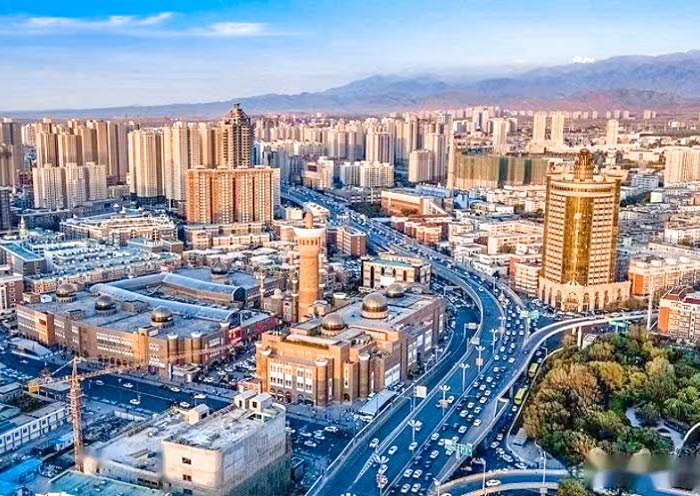
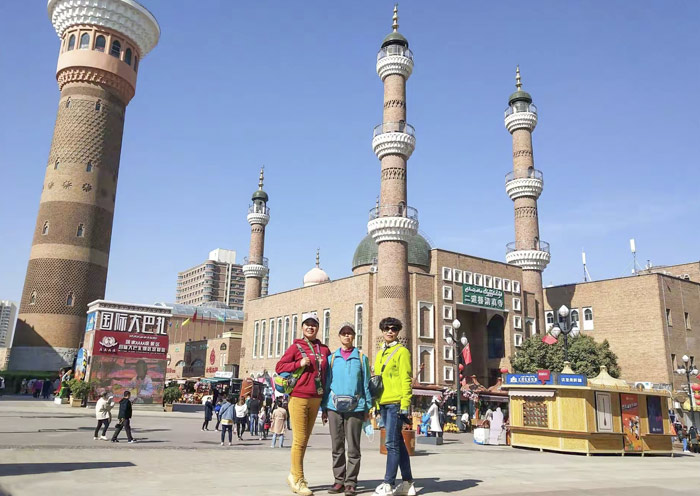
Today, you'll embark on a full-day exploration, from the breathtaking natural beauty of Tianshan Tianchi Lake to the enlightening exhibits at the Xinjiang Regional Museum.
In the morning, you'll be driven approximately 70 kilometers (about 1-1.5 hours) to Heavenly Lake of Tianshan (天山天池), a UNESCO World Heritage Site. Nestled at an elevation of around 1,980 meters (6,500 feet) above sea level, this serene alpine lake is surrounded by lush forests, snow-capped peaks, and breathtaking landscapes. Renowned for its crystal-clear waters, panoramic Bogda mountain views, and connections to ancient myths and legends, Heavenly Lake is a must-see. One such legend involves the Queen Mother of the West (Xi Wangmu), who is said to have hosted a banquet for the Eight Immortals here.
Upon arrival, you'll first take 40-minute sightseeing bus ride through the dramatic mountains. Then, enjoy 10-minute walk to the picturesque lake. Enjoy a leisurely stroll around Heavenly Lake, taking in the fresh mountain air and diverse flora and fauna.
Optional Activities (additional fee required):
- Boat Ride: Cruise across the peaceful waters of the lake, immersing yourself in its beauty and the reflections of the snow-capped mountains.
- Cableway Ride: Take a cableway up to Mayashan for even more stunning views of Bogda Mountain.
After lunch, return to Urumqi and visit the Xinjiang Regional Museum (新疆维吾尔自治区博物馆). This renowned museum showcases theregion's rich history, ethnic cultures, and the ancient Silk Road. Explore extensive collections that include exoticartifacts from the Silk Road, and fascinating displays of traditional ethnic costumes and household items from variouscultures such as Uyghur, Kazakh, and Han. The most unique is the exhibit of ancient mummies, which houses some of theworld’s best-preserved mummies, including the famous “Loulan Beauty 楼兰美女”, one of the 3,800-year-old desert-mummifiedbodies of Indo-European ancestry. Remember to take a look at the 'Five Stars Rise in the East, Benefit China' HanDynasty Brocade Armband (”五星出东方利中国”汉代锦护臂), which is one of the first batches of cultural relics in China that wereprohibited from being exhibited abroad. It is acclaimed as one of the greatest archaeological discoveries of20th-century China. Also, the "Fu Xi and Nu Wa Silk Painting (伏羲女娲图)" illustrates the image of human ancestors fromancient Chinese myths and legends, dating back to the Tang Dynasty. The museum’s immersive exhibits will transport youback in time, allowing you to learn about the fascinating history of the Silk Road and the cultural interactions thathave shaped Xinjiang.
Note: If the Xinjiang Regional Museum is closed on Monday, we will visit the Urumqi Grand Bazaar (新疆国际大巴扎) instead.
After the tour, return to your hotel in Urumqi.
Free Time Ideas:
The Urumqi Grand Bazaar, also known as the Xinjiang International Grand Bazaar, is a vibrant marketplace and a perfect way to spend your free time. Explore the many shops and stalls offering various local products, including traditional Uyghur clothing, carpets, handmade crafts, silk scarves, jewelry, spices, and dried fruits. Be sure to try local favorites such as lamb kebabs, polu (pilaf), naan bread, and laghman (hand-pulled noodles). Additionally, the architecture of the Grand Bazaar itself is worth admiring with its grand minarets, domes, and intricate Islamic-inspired designs.
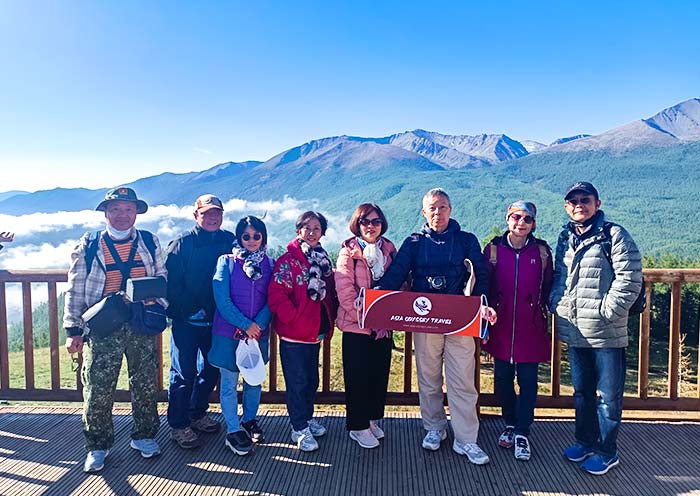
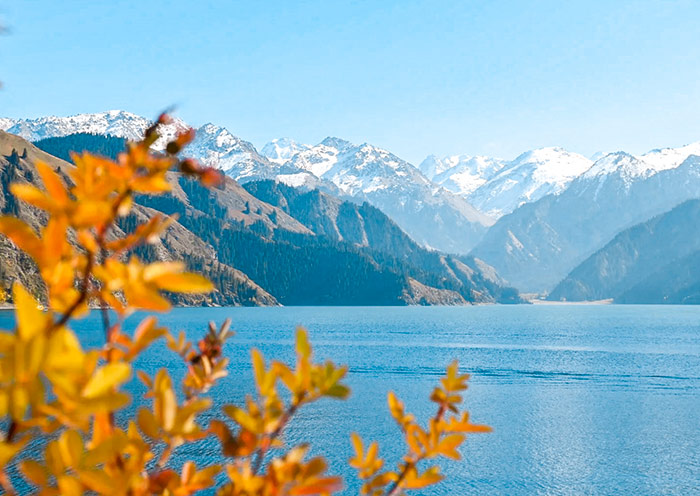
After breakfast, embark on a scenic 3-hour drive (180 km) from Urumqi to Turpan. Along the way, you’ll pass the striking Salt Lake and the impressive wind power station, the largest in Asia, at the foot of the Tianshan Mountains.
Turpan (吐鲁番) is located in the eastern part of Xinjiang. Situated in the Turpan Depression at 154 m below sea level, it's the second-lowest depression in the world and the hottest spot in China, earning it the nickname "Fire Land."
Despite its arid climate, the ingenious Karez irrigation system has transformed this desert region into a fertile oasis, renowned for its agriculture, especially grape production. As a crucial stop on the ancient Silk Road, Turpan served as a hub for trade and cultural exchange between East and West. The area is dotted with historical sites - ancient city ruins, remnants of fortifications, and Buddhist cave complexes - testifying to its rich cultural roots.
Upon arrival in Turpan, you will drive to Tuyoq Valley along the Flaming Mountain Grand Canyon. The Flaming Mountains (Huoyan Shan), named for their intense heat and reddish-brown sandstone that appears to glow like fire under the desert sun, are one of Turpan’s most iconic landscapes. Stretching over 100 kilometers from east to west, these eroded hills create a striking, otherworldly view. Along the way, we can stop for photos.
Cultural Background of Flaming Mountains
The Flaming Mountains are steeped in legend, depicted in the famous Chinese literary classic Journey to the West by Wu Cheng’en. In the story, the Flaming Mountains block the westward journey of Tang Sanzang and his companions, as the mountain is ablaze with scorching heat. To overcome this obstacle, the Monkey King, Wukong seeks out Princess Iron Fan and borrows her Banana Leaf Fan, which he uses to extinguish the fire and allow the group to pass safely. The video game Black Myth: Wukong also introduces the Flaming Mountains as one of its game settings, drawing on this legendary scene.
The winding road along the cliffs of the Flaming Mountains will soon lead you to Mazar Village (麻扎村), nestled in the Tuyoq Valley (吐峪沟). It is the oldest surviving Uyghur village, with a history of over 1700 years. The mud-constructed town offers a glimpse of traditional Uighur life and architecture. Here, every household grows mulberry, apricot, or jujube trees around their homes. The doors are adorned with colorful paintings of flowers and fruits, and the window lattices are also decorated with a variety of motifs. The ancestors of Mazar Village, adapting to the local environment and survival needs, ingeniously used locally sourced yellow clay to construct their homes. This has resulted in one of the best-preserved earthen architecture complexes in China today. The earth-toned dwellings adorned with colorful door frames, set against the backdrop of red mountains, are extremely photogenic.
Next, make your way to Bezeklik Thousand Buddha Caves (柏孜克里克千佛洞), which is a complex of Buddhist cave grottos located on the cliffs of the Flaming Mountains. Dating back to the 5th to 14th centuries, the Bezeklik Thousand Buddha Caves - Silk Road World Heritage, once served as one of the most significant and beautiful grottoes on the Silk Road, as well as a royal monastery and temple for the Kingdom of Gaochang, played a significant role in the spread of Buddhism across Central Asia. The name "Bezeklik" means "place of paintings" in the Uyghur language, reflecting the caves' renowned collection of colorful murals.
Here, you'll step into the remnants of this ancient Buddhist site, marveling at an impressive collection of murals and sculptures, many of which were painted during the 11th century, showcasing Uyghur Buddhist art at its finest. These murals depict scenes from Buddhist stories, celestial beings, and scenes of daily life during the Silk Road's heyday. They represent a unique blend of Chinese, Indian, Persian, and Central Asian influences, reflecting the diverse cultural interactions along the Silk Road.
Optional Activity: From July to September, when the grapes are ripe, it's recommended to visit local farms to experience the joy of grape picking and tasting. Turpan is particularly famous for its high-quality grapes, which, thanks to the high temperatures and abundant sunlight of the Turpan Basin, have a very high sugar content.
After the tour, be escorted to your hotel in Turpan.
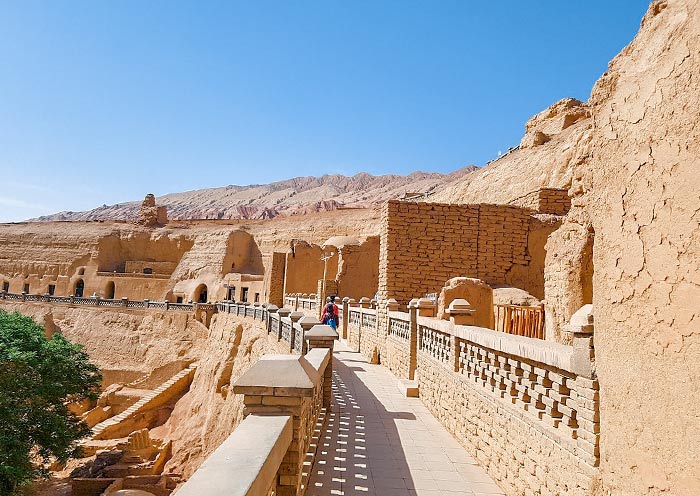
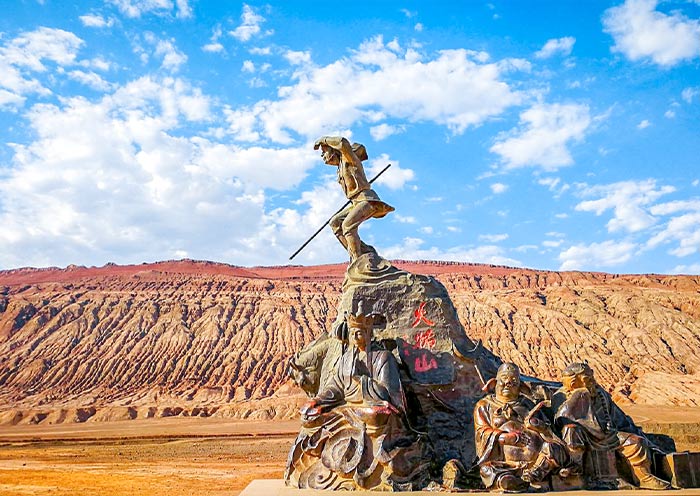
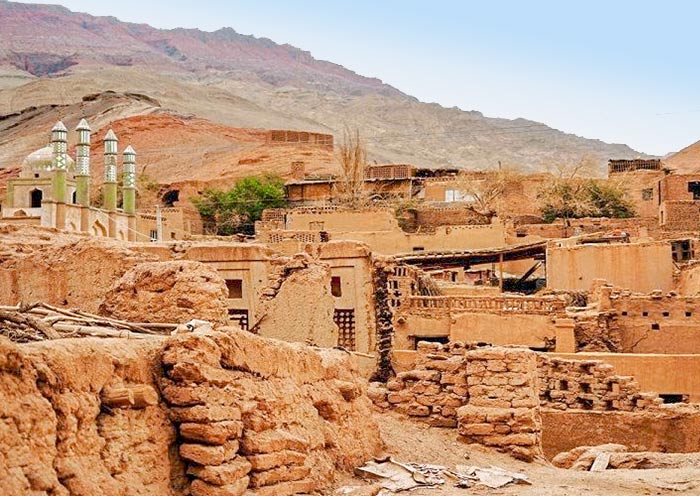
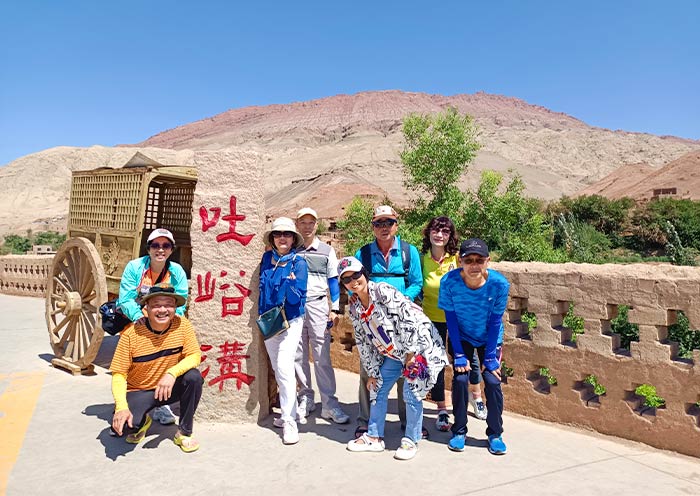
After breakfast, begin your visit to Jiaohe Ancient City (交河故城), one of the best-preserved ruins of ancient cities along the Silk Road and inscribed on the UNESCO World Heritage List as part of the joint application "Silk Roads: the Routes Network of Chang'an-Tianshan Corridor." Jiaohe Ruins offers a profound glimpse into ancient city planning and the historical complexity of the civilizations on the Silk Road.
Nestled between two deep river valleys, Jiaohe, meaning "the confluence of two rivers," is strategically positioned on a large, steep plateau that provides formidable natural defenses. As a key city connecting the Central Plains (中原) and the vast regions of the Western Regions (西域), Jiaohe Ancient City played a vital role in the transportation network of the Silk Road. It witnessed the bustling trade along the Silk Road and the exchange and integration of Eastern and Western cultures.
Unlike many ancient cities, its structures were not built up from the ground but carved down into the existing plateau of loess soil. Walking through the ruins, you can see the remains of government offices, residential houses, Buddhist stupas, and temples. These remnants not only provide important physical evidence for studying the history and culture of the Silk Road but also offer valuable insights into the social, economic, and religious life that shaped this region. Tips: There is no shelter inside the ruin, so be mindful of sun protection.
The History of Jiaohe Ancient City
The Ancient City of Jiaohe witnessed the development of civilization in the Western Region and the Silk Road. Approximately 2,000 years ago, it was established as the capital of the Jushi Kingdom (车师国), one of the 36 kingdoms in the Western Regions (西域三十六国). Following Zhang Qian's pioneering efforts during the Western Han Dynasty to carve a path through the Western Regions, Jiaohe City emerged as a crucial hub on the Silk Road. In 60 BC, the Han Dynasty central government established the Protectorate of the Western Regions (西域都护府) to administer the various states in the region, officially incorporating the Western Regions into the Chinese domain. During the Northern and Southern Dynasties, Jiaohe became a county under the jurisdiction of Gaochang(高昌). The city reached its zenith during the Tang Dynasty with the establishment of the Anxi Protectorate (安西都护府), marking a new era in the governance of the Western Regions. During this period, Jiaohe was a bustling center of international trade and vibrant cultural exchanges among diverse ethnic groups. From the 19th to the 14th century, due to the impact of wars, Jiaohe gradually declined and eventually became a ruin.
Next, head to the Karez System (坎儿井) to learn about the ancient underground irrigation system a few thousand years ago and how this system has benefitted the people along the desert's edge, transforming barren land into a lush oasis. This traditional engineering marvel is considered one of China’s three great ancient engineering projects, alongside the Great Wall and the Grand Canal. It has been recognized in the 2024 World Irrigation Project Heritage list.
The origin of the Karez Irrigation System
Turpan, in Xinjiang, is one of China's most arid regions, with annual rainfall of only 16 millimeters and evaporation exceeding 3,000 millimeters. These extreme conditions have led to severe surface water scarcity. To improve their survival prospects, people ingeniously utilized the natural slope of mountains to channel underground rainwater, glacial melt, and snowmelt from spring and summer to the surface for irrigation. This method greatly reduced water loss through surface evaporation, meeting the water needs of this arid region. It’s often said, "Without the Karez, there would be no Turpan; without the Karez, there would be no civilization in Turpan." The Karez has turned extremely arid basins into green havens, making Turpan a crucial corridor for East-West exchanges along the Silk Road and a place where diverse cultures converge and coexist.
The Karez system is often referred to as the "Underground Great Wall". In Xinjiang, there are over 1,700 karez wells which, if connected, would stretch over 5,000 kilometers, forming a vast underground river network. It is estimated that the Karez system has a history of over 2,000 years. Imagine centuries ago, without modern measuring tools or mechanical assistance, how ancient people located underground water sources, determined the gradient and direction in complete darkness, and connected such lengthy channels. Today, you have the opportunity to step into the Karez and personally unravel the secrets of this most mysterious hydraulic engineering project, experiencing first-hand how ancient innovation works.
Next, continue your exploration at the Emin Minaret (额敏塔), the tallest Islamic minaret in Xinjiang. Also known as Sugong Ta (苏公塔), this remarkable structure was erected in 1778 by the local ruler Suleiman, in tribute to his father, Emin Khoja, whose considerable efforts helped maintain national unity.
It stands 44 meters (144 feet) tall and is made from sun-dried bricks, which give it a distinct, earthy color. The tower's cylindrical body tapers elegantly as it rises, topped by an ornate, pointed dome. Uyghur artisans crafted up to 15 different types of brick patterns, including waves, diamonds, floral clusters, and crosses, which create endlessly looping designs around the tower. Gazing up from beneath the tower, you can fully appreciate the simplicity and grandeur of these designs. The accompanying mosque is an integral part of the complex, which you can visit as well. Emin Minaret serves not only as a religious structure but also as a cultural icon for the Uyghur people, embodying a unique blend of Islamic and Uyghur architectural traditions.
Afterward, return to Urumqi for an overnight stay.
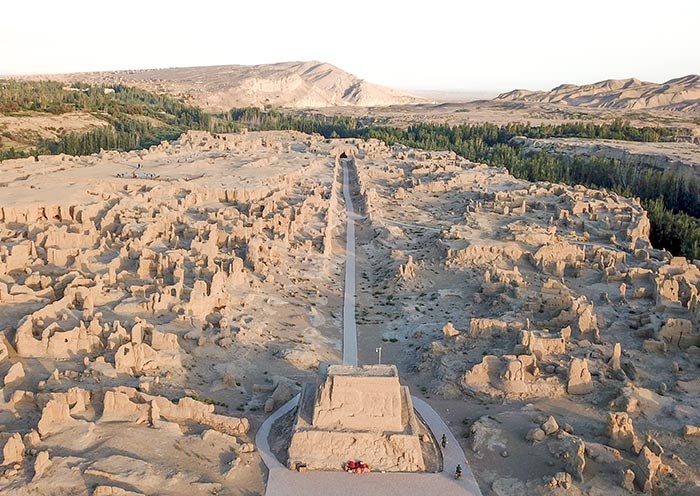
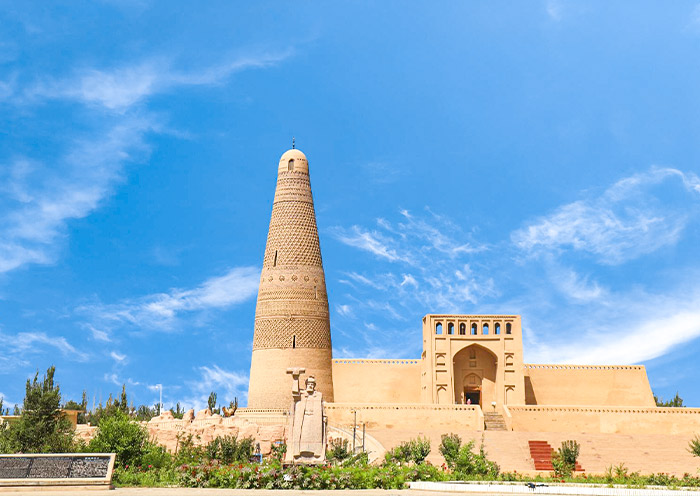
This early morning, you will take a flight to Kashgar (about 2 hrs). Upon arrival at Kashgar Airport, your local tour guide will greet you and escort you to downtown Kashgar.
Kashgar (喀什), located in the southwestern part of Xinjiang, was historically known as Shule ( (疏勒国), and was one of the thirty-six kingdoms of the Western Regions (西域三十六国). For centuries, Kashgar has been a significant city in southern Xinjiang. It served as the western terminus for the northern, central, and southern routes of the ancient Silk Road, connecting Asia and Europe. It has long been a transportation hub and distribution center for goods between East and West. Trade is highly developed here, earning it the title of "Kingdom of Bazaars (markets)." Diverse cultures from Asia and Europe converge on Kashgar, clashing and blending intensely with the local culture, injecting new vitality into Kashgar. This cultural fusion is specifically reflected in Kashgar's architecture, cuisine, and vibrant markets.The city has been a melting pot of various ethnicities, including Uyghurs, Han, Tajiks, and others. Kashgar's geographical location is near the Taklamakan Desert and surrounded by the Kunlun Mountains and the Pamir Plateau provides spectacular natural scenery.
Your exploration can begin in Kashgar Old City (喀什老城市). The Old City is the soul of Kashgar, encapsulating over two millennia of cultural and commercial exchanges along the Silk Road. Situated at the heart of the city and spread across 3.6 square kilometers, the Old City is a living museum, telling tales of ancient trade and cultural fusion. As a crucial hub for East-West traffic and a distribution center for goods, it offers a vivid glimpse into past prosperity.
Within Kashgar Old City, the streets and alleys intersect intricately, narrow and winding paths with buildings of varying heights, creating a layout that resembles a maze. As you wander through, you'll see traditional Uyghur mud-brick houses and numerous structures with Islamic features, such as pointed arches, domes, intricate woodcarvings, and colorful ceramic tiles. These architectural and street designs perfectly Central Asian and Islamic architectural elements with Uyghur characteristics, creating a sense of time travel for visitors.
The Kashgar Old City thrives with commercial activity, with numerous bazaars and street markets scattered throughout, such as the Pottery Bazaar, Flower Pot (Doppa) Bazaar, Blacksmith Bazaar, Woodwork Bazaar, Medicine Tea Bazaar, Han Bazaar (Food Street)... This area is not only an excellent place to purchase and appreciate various handicrafts but also an ideal spot to savor Uyghur cuisine. Indulge in succulent lamb kebabs (羊肉串), rich and spicy lagman noodles (拉条子), savory samsas (烤包子), and freshly baked Naan (囊). As you wander through, the scenes, sounds, and scents on the streets seem to transport you back to the heyday of the Silk Road. You can almost visualize the bustling caravans, with merchants from China, Persia, Arabia, and many local regions converging here. The air is filled with the melodious ringing of bells on camels' necks.
Furthermore, Kashgar Old City is a hub for numerous cultural and religious activities as well as a place for residents' daily lives and social interactions. One of the most notable landmarks is Id Kah Mosque(艾提尕尔清真寺), one of the largest mosques in China, attracting thousands of worshippers daily. To experience local life firsthand, you can visit a century-old teahouse (百年老茶馆). As you sit, sip tea, and observe, you'll appreciate the traditions and hospitality of Uyghur people. With luck, you might have to a chance to witness locals playing and singing traditional Rawap music.They may even invite you to join in, twirling your hands as you dance.
If you happen to visit Kashgar on a Sunday, you can't miss the famous Kashgar Livestock Market (牛羊巴扎).
On the northern edge of Kashgar city, there is a massive livestock trading market. Every Sunday, this market becomes as lively as a carnival. People from surrounding villages flock here with their sheep, cows, and even camels.
At the market, you can witness Uyghur herders proudly showcasing their livestock. The traders typically grasp each other’s hands inside the spacious sleeves of their robes, silently signaling their price offers with their fingers - an intriguing and silent process full of wit. Once the price is agreed upon, neither party can back out. This traditional method of trade has been continuing for thousands of years. It’s an excellent opportunity for photography and to witness the ancient commercial traditions that are fast becoming rare in the modern world.
Tips: Due to the large number of livestock in the market, prepare yourself for a strong odor.
After the tour, be escorted to your hotel in Kashgar.
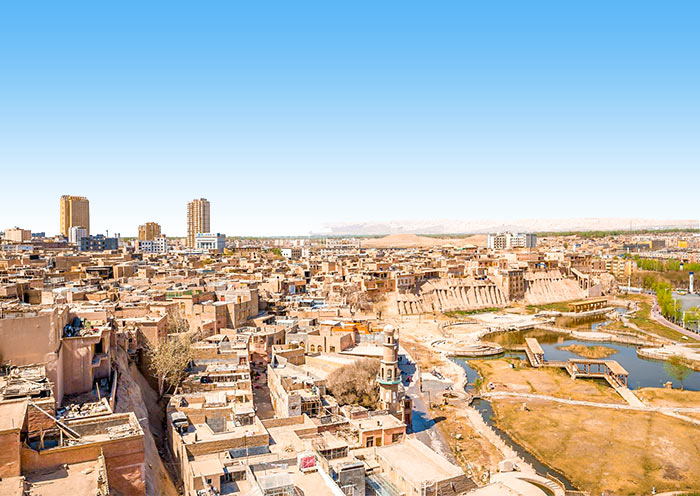
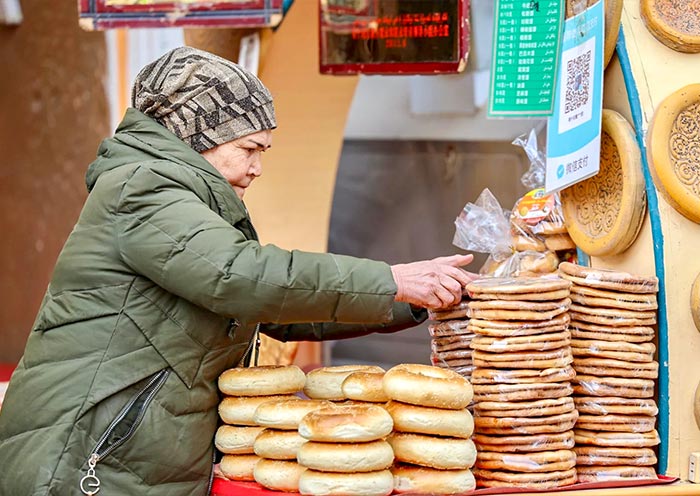
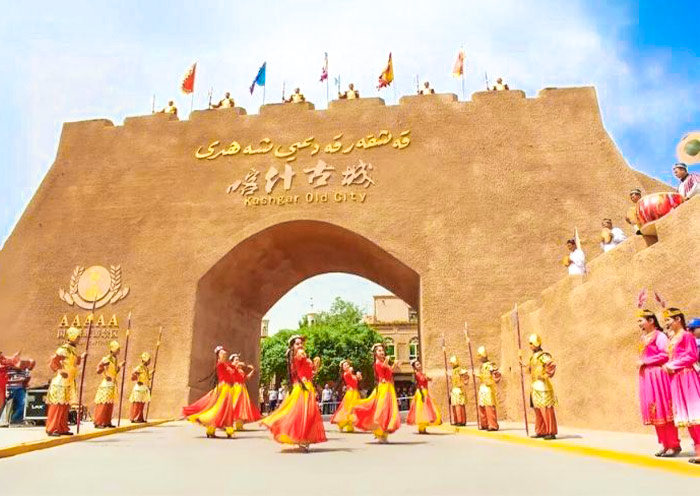
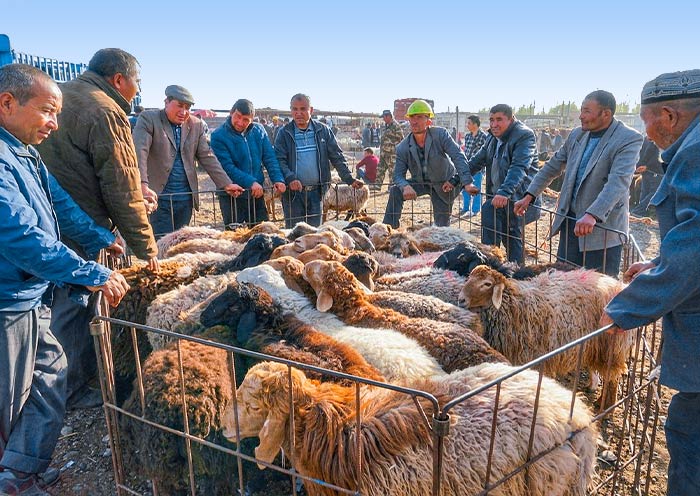
This morning, your guide and driver will pick you up from your hotel in Kashgar to embark on an exhilarating road trip along the China-Pakistan Highway. Along the way, you can enjoy the beautiful landscape of Pamirs Plateau, visit Baisha Lake and Karakul Lake, admire the distant and mysterious Muztagh Ata Peak, Kongur Tagh, Kongur Tiube. Finally, you will drive back to Kashgar. (Total distance:400 kilometers, approximately 8 hours of travel).
The China-Pakistan Highway (中巴公路), also known as theKarakoram Highway (KKH), is one of the world's highest paved international roads. It connects China and Pakistan across the Pamir Plateau (帕米尔高原) and is locally referred to as the Pamir Highway. Historically, routes across the Pamir Plateau - known as Congling (葱岭) in ancient times - were vital parts of the Silk Road. This section posed one of the most daunting challenges for merchants and travelers due to its harsh, rugged terrain. Here, several of the world's renowned mountain ranges - the Himalayas, the Karakoram, the Kunlun Mountains, the Tianshan Mountains, and the Hindu Kush - converge and radiate outward, forming a massive mountainous junction. Today, the China-Pakistan Highway has transformed these perilous trade routes of the past into magnificent thoroughfares, attracting numerous tourists to the Pamir Plateau to experience its stunning natural scenery.
Along the way, you will visit the following attractions:
Baisha Mountain-Baisha Lake Scenic Area (白沙山-白沙湖景区):
As you drive along National Highway G314, you'll encounter Baisha Lake (白沙湖), also known as Bulunkou Lake - a striking plateau lake nestled in the Pamir Plateau (elevation:about 3,660 meters). From its shore, you're treated to a stunning vista: half pristine blue water, and half white sand mountain, both harmonizing with distant snow-capped peaks to create a magnificent spectacle.
On the lake's northern shore stands the renowned Baisha Mountain (白沙山), winding for over 1,200 meters. The dark mountain body, covered with white sand, presents a soft silvery-white color under the clean sunlight of the Pamir Plateau, resembling white silk. Legend has it that as the lake water gradually dries up in autumn and winter, the white sand at the bottom of the lake emerges. In spring, the wind blows this sand onto the mountain, creating the extraordinary spectacle of sand accumulating into a mountain. Whenever strong winds blow, Baisha Mountain emits a sound, earning it the name "Singing Sand Mountain." The southern shore of the lake is embraced by a chain of snow-capped mountains, with the highest peak being Mount Kongur Tagh at an elevation of 7,530 meters, adding further grandeur and mystery to this captivating landscape.
Karakul Lake (喀拉库勒湖):
Karakul Lake is a high-altitude moraine lake (elevation:about 3,600 meters).Its name in the Kyrgyz language means "Black Lake," attributed to its deep, dark waters. However, if you spend enough time by the lake, you will notice that it changes colors under different lighting conditions, appearing deep blue, emerald green, or ink black, earning it the nickname "the ever-changing lake."
Yet, the true highlights of Karakul Lake are the imposing peaks known as the "Kunlun Trio" that tower behind it: Kongur Tagh, Kongur Tiube, and Muztagh Ata, with altitudes of 7,719 meters, 7,595 meters, and 7,546 meters, respectively. On clear days, their majestic reflections are perfectly cast upon the glistening surface of the lake, creating the most iconic views of Karakul Lake. Among these, Muztagh Ata is particularly striking, covered with many glaciers, and is known as the "Father of Ice Mountains."
After tour, you will you will drive back to Kashgar along the scenic China-Pakistan Highway. You'll have another opportunity to admire the spectacular snow-capped peaks from various angles on both sides.
Stay overnight in Kashgar city.
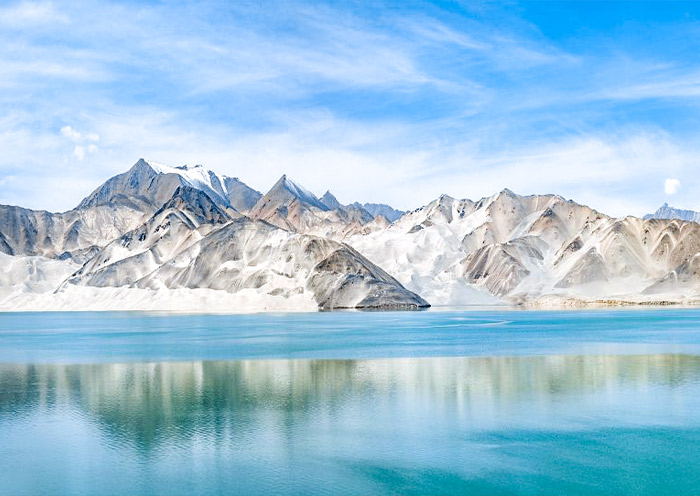
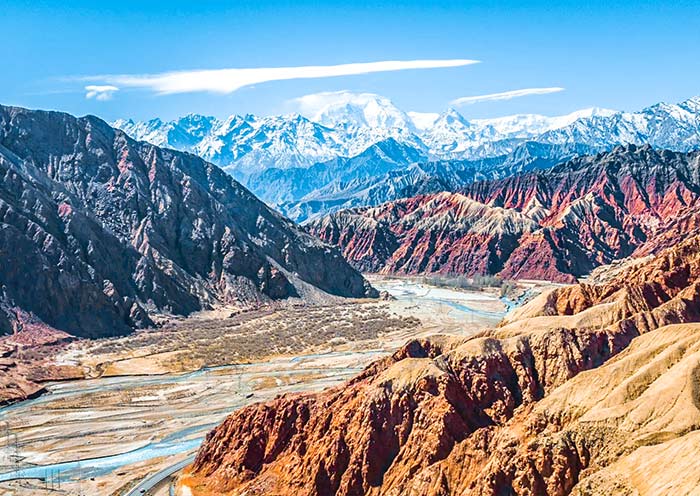
Today, you will leave Kashgar, in Xinjiang, China, and head toward the Torugart Pass, the border between China and Kyrgyzstan. Located about 166 km northwest of Kashgar (about 4 hours’ driving), this scenic mountain route offers breathtaking views of vast highlands and remote landscapes.
After completing the border formalities, you will meet your local Kyrgyz guide and continue your journey to Naryn. Along the way, you will pass the pristine beauty of Chatyr-Kul Lake, one of Kyrgyzstan’s highest and most serene alpine lakes.
Arrive in Naryn. Nestled in the central-eastern region of Kyrgyzstan at an altitude of around 2,044 meters, Naryn is a charming town surrounded by majestic mountains and crossed by the Naryn River. Stay overnight here.
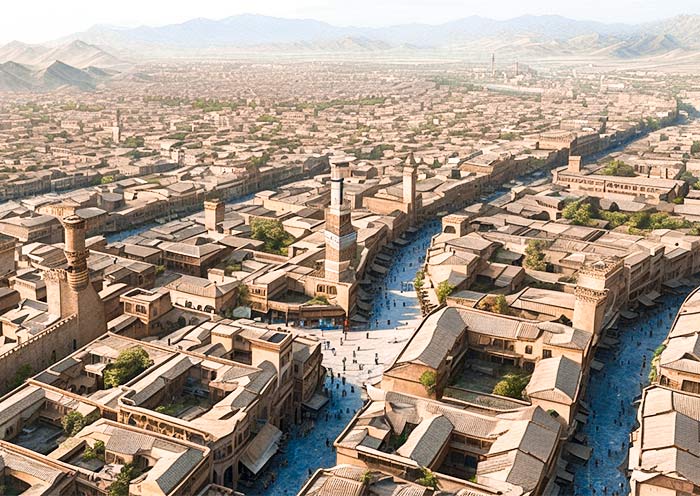
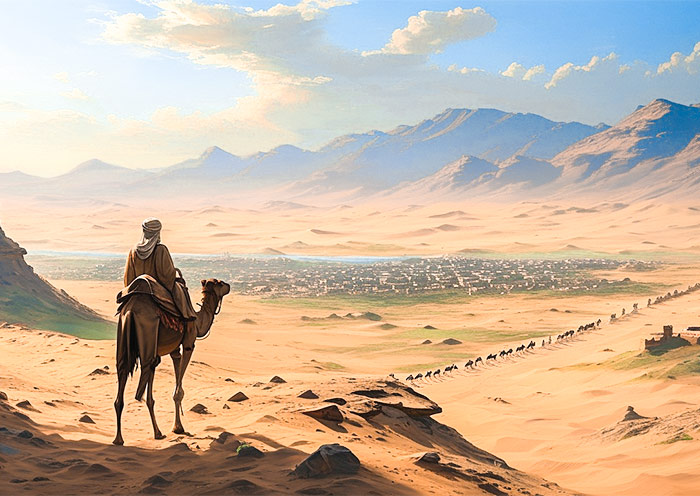
This morning, drive from Naryn to Bokonbayevo, a journey of about 4 hours through scenic mountain roads and valleys. Bokonbayevo is known for its authentic nomadic culture and as one of the main centers of eagle hunting in Kyrgyzstan. Here, you’ll witness golden eagle demonstration, where local hunters showcase ancient techniques that have been practiced by Kyrgyz nomads for centuries - a true glimpse into the spirit of the steppe.
Later, continue to Kyzyl-Tuu Village, located on the southern shore of Issyk-Kul Lake. This small community is renowned for its traditional yurt-making craftsmanship, a skill passed down through generations. Kyzyl-Tuu is often described as a living museum of this art, where you can observe how artisans build yurts from scratch — shaping wooden frames, layering felt, and assembling a cozy, durable home in perfect harmony with nature.
Tonight, experience Kyrgyz hospitality first-hand as you stay overnight in Kyzyl-Tuu Village.
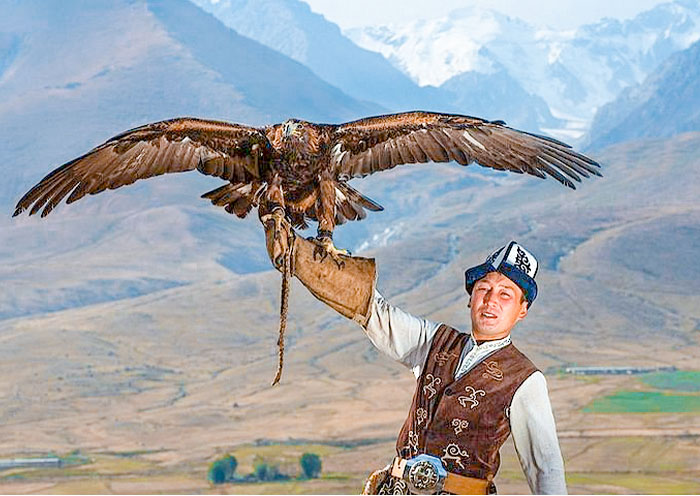
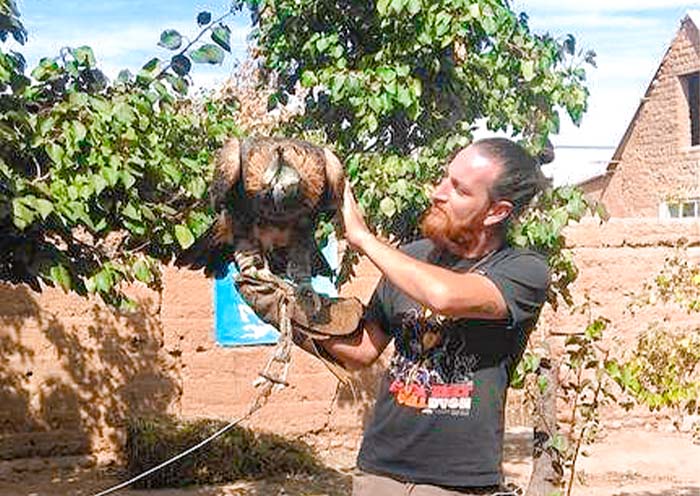
After breakfast, we bid farewell to Kyzyl-Tuu Village and embark on a scenic 2-3 hour drive (142 km) to the resort town of Cholpon-Ata.
Before arriving at the lake, you will visit the Petroglyphs Museum. This open-air museum, spanning 42 hectares, is set on a vast landscape with the majestic Tian Shan mountain range as its backdrop. Here, you'll find ancient petroglyphs carved into massive black basalt stones, dating from the 2nd millennium BC until the 4th century AD. These carvings depict animals like wolves and snow leopards, as well as scenes of hunting and sacrifice.
Afterward, you will arrive in Cholpon-Ata on the northern shore of Issyk-Kul. You'll check into your hotel, and the rest of the day will be yours to relax and enjoy the beautiful lake.
Issyk-Kul is often called the "Pearl of Central Asia." Its name means "warm lake" in Kyrgyz, as its saltwater composition keeps it from freezing even at an altitude of 1,607 meters. Its crystal-clear waters give you the feeling of being on the seashore.
Ideas for Free Time at Issyk-Kul Lake:
(1) Relax or Swim: Head to the golden sandy beaches to sunbathe or take a refreshing swim in the warm, clear water.
(2) Take a Boat Trip: Go to the pier and take a boat out onto the lake to admire the magnificent views of the surrounding snow-capped mountains.
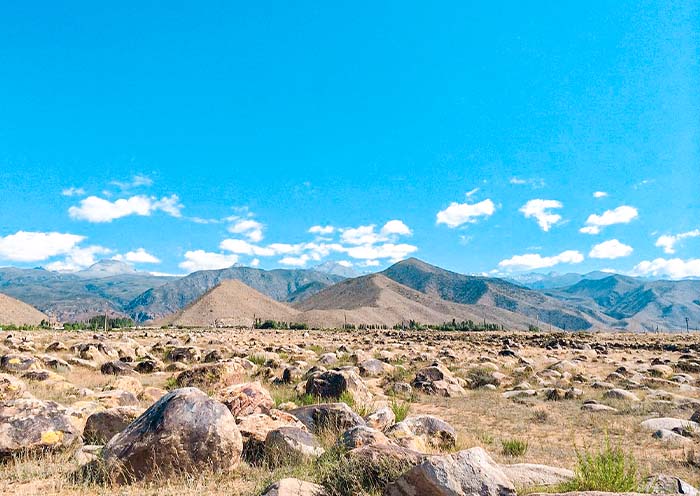
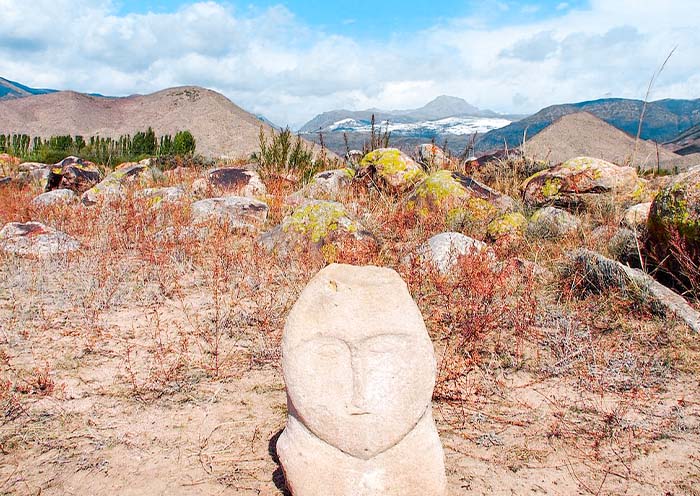
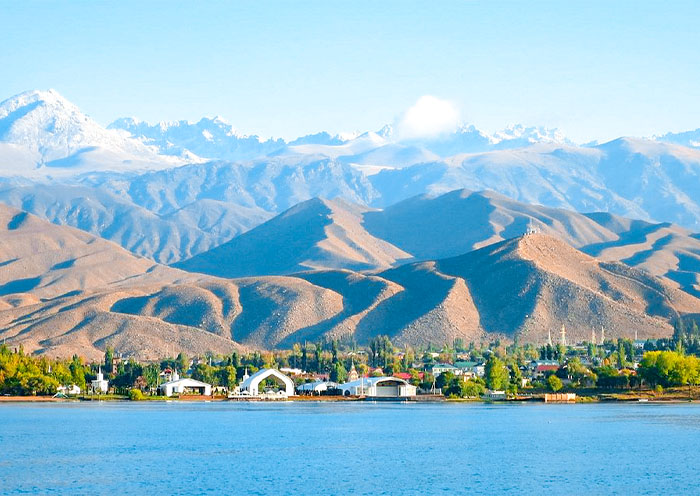
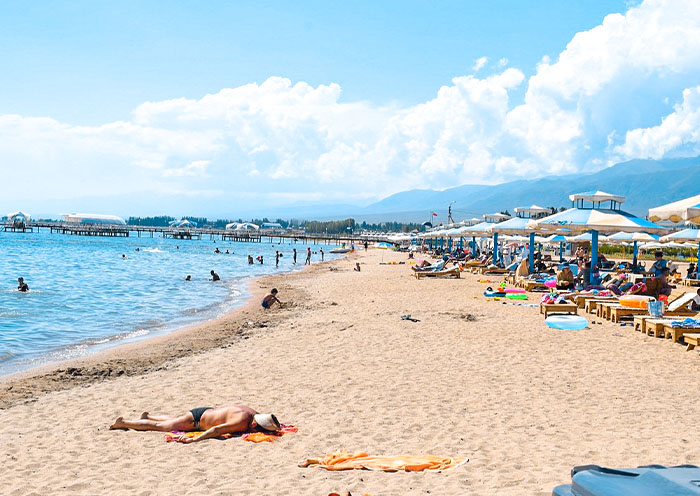
Today, you'll drive from Cholpon-Ata to Bishkek. Along the way, you'll have the chance to visit Burana Tower. This historic site, originally built in the 11th century, was once part of Balasagun, the ancient capital of the Kara-Khanid Khanate. You can climb to the top of the tower to get a spectacular view of the surrounding ruins and the distant snow-capped mountains. On the ground, you can walk among the Balbals - stone figures that are medieval Turkic nomadic gravestones - offering a fascinating glimpse into the region's ancient past.
In the afternoon, you can explore Bishkek on your own.
Free Time Ideas for your OWN EXPLORATION:
- Visit the Russian Orthodox Church(also called Holy Resurrection Cathedral). This is the largest Russian Orthodox church in Kyrgyzstan. The cathedral features sky-blue, onion-shaped domes and an intricately detailed, three-level iconostasis decorated with icons of saints and angels.
- Choose a local restaurant to try traditional Kyrgyz dishessuch as beshbarmak (the national dish), plov (pilaf), laghman (thick noodles with meat and vegetables), or various kinds of shashlik (meat skewers).
- When night falls, take a walk along Chui Avenue. This main thoroughfare is lined with magnificent Soviet-era buildings and has a variety of shops, cafés, restaurants, and shopping centers.
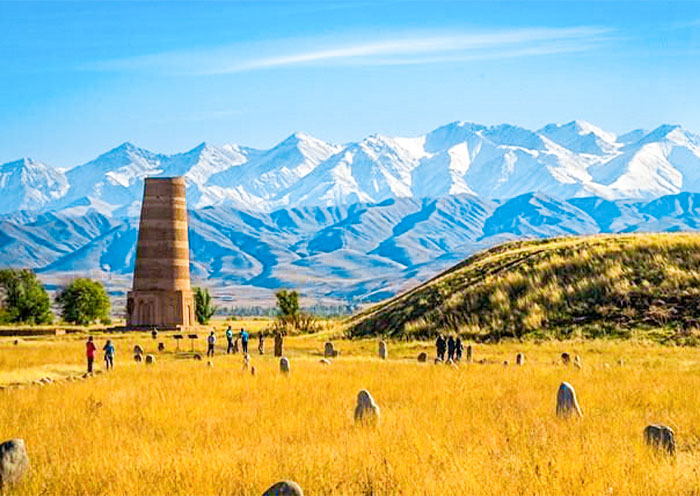
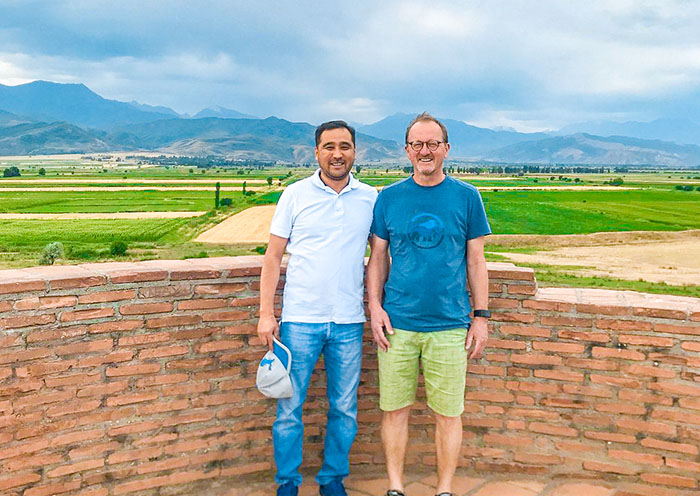
After breakfast, you will have time to explore the city highlights of Bishkek. Begin at the city's main square - Ala-Too Square. See the imposing statue of Manas, the legendary national hero, as well as the Government House and the national flagpole. At certain times, you may also witness military changing-of-the-guard ceremony.
From the square, walk to beautiful Oak Park, a quiet retreat in the city center with centuries-old oak trees and a collection of sculptures.
And then, move to Osh Bazaar. Experience local life and browse everything from fresh produce, spices, and dried fruits to traditional clothing, handicrafts, and carpets.
This afternoon, you'll drive to Ala-Archa National Park (30 km, 40 minutes to an hour), located southwest of Bishkek. Known as Bishkek's "backyard park," this alpine park in the Tian Shan Mountains offers scenery reminiscent of Switzerland. Majestic snow-capped peaks, blue skies, dense pine forests, alpine meadows, and picturesque river valleys. It's great for light hiking. You can follow the river to enjoy a memorable time here. Keep an eye out for animals like squirrels, red deer, wild goats, or even snow leopard (rare to see)! (Route Tip: There are three hiking routes to choose, we suggest you the easy one follow the riverbank for scenic views).
After the hike, you'll be transferred back to your hotel in Bishkek.
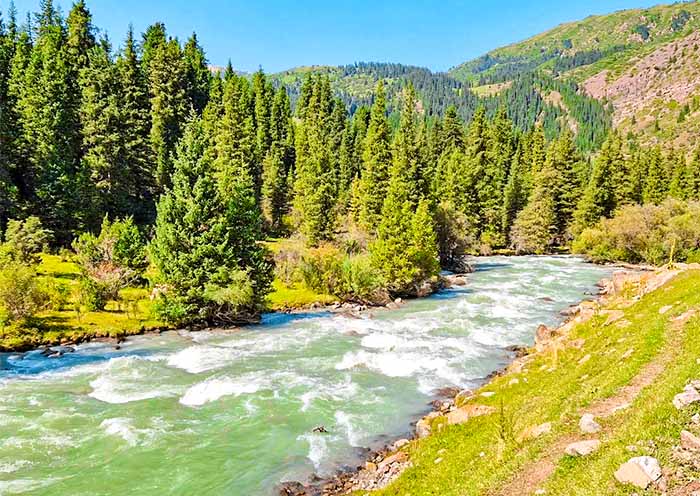
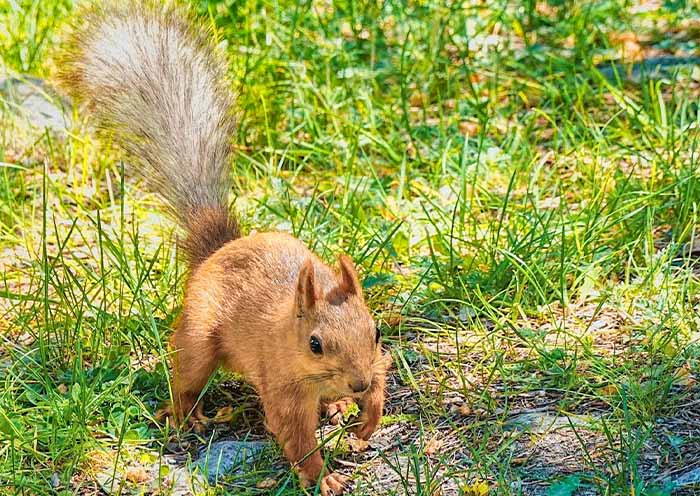
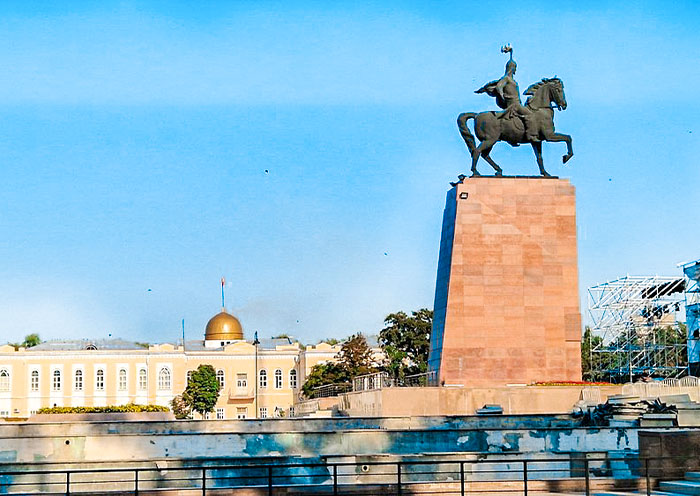
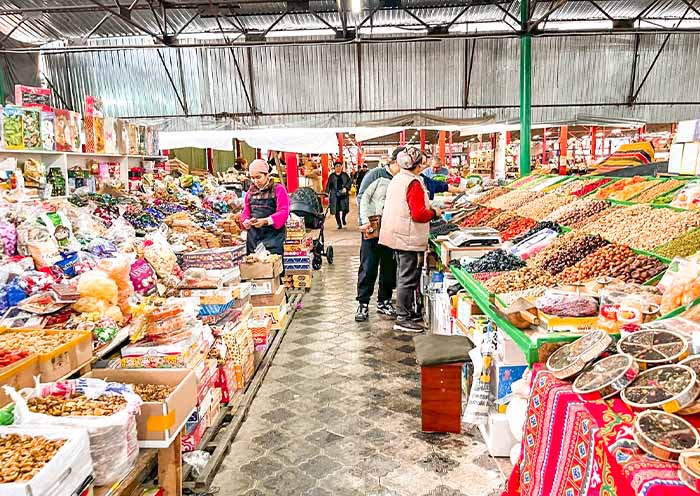
After breakfast, you will have some free time to explore Bishkek. Afterward, you will be transferred to the airport for your flight to your next destination or to return home. Your 12 Days Xinjiang Kyrgyzstan tour concludes here. (Tip: Please inform us of your flight details so we can arrange your airport transfer accordingly.)
Optional Extension:
Kyrgyzstan is part of a larger Central Asia tour. You can also cover other highlights in Kazakhstan, Uzbekistan, Tajikistan, and Turkmenistan. We can tailor Central Asia tour based on your preferred duration and interests.
Thank you for choosing Asia Odyssey Travel for your China & Central Asia tour. We look forward to welcoming you back for your next adventure!
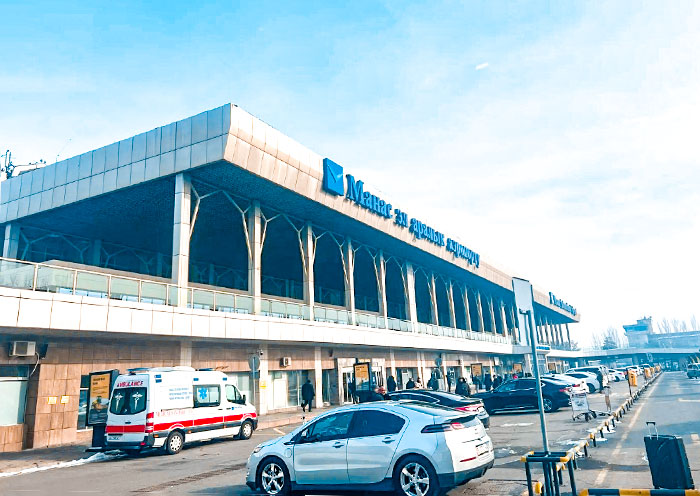
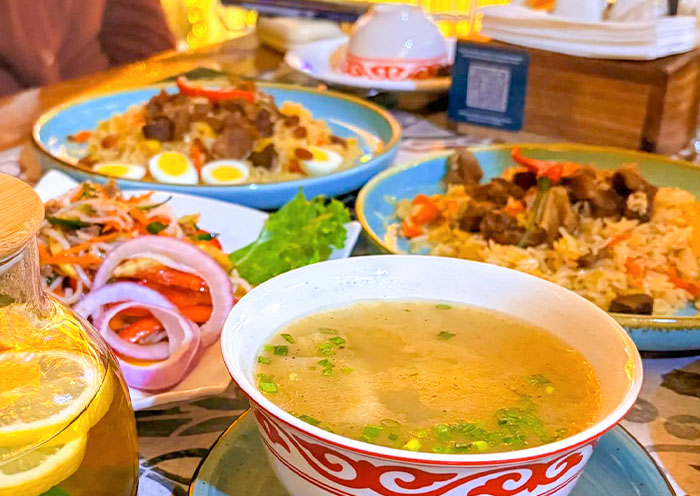
Price: What’s Included & What’s Excluded
What's Included:
What's Excluded:
Central Asia Trip Notes & Booking Tips
| Country | Highlights | Must-Do Experiences |
|---|---|---|
| Kazakhstan | Endless steppe, futuristic cities, striking natural wonders | Explore Almaty’s lively streets, marvel at Charyn Canyon, ride cable cars to mountain viewpoints, and learn about nomadic horse culture |
| Kyrgyzstan | Mountain peaks, alpine lakes, nomadic spirit | Stay in a yurt at Issyk-Kul Lake, visit Burana Tower, hike alpine gorges, and watch eagle hunting demonstrations |
| Uzbekistan | Silk Road jewels, turquoise domes, vibrant bazaars | Wander Registan Square in Samarkand, explore Bukhara’s old town, admire mosaics in Shakhrisabz, shop for silk, spices, and carpets |
| Tajikistan | Rugged mountains, hidden valleys, Sogdian history | Discover Penjikent’s ruins, trek to the Seven Lakes, and meet locals in remote mountain villages |
| Turkmenistan | Marble cities, desert mysteries, Silk Road ruins | Camp by the fiery Darvaza Gas Crater, explore Ancient Merv, and see Ashgabat’s white-marble monuments |
- Spring (April June): Mild weather, blooming valleys, fewer crowds
(1) Perfect for sightseeing in Uzbekistan’s Silk Road cities (Samarkand, Bukhara, Khiva) before the summer heat. (2) Kyrgyzstan’s and Kazakhstan’s mountains are lush and green, great for gentle hikes. (3) Desert areas in Turkmenistan are comfortable for visiting Darvaza Gas Crater and Merv.
- Autumn (September October) - Most Recommended Season: Pleasant temperatures, colorful landscapes
(1) Ideal time for a grand tour of all 5 Stans. (2) Crisp, sunny days make exploring cities and mountain regions easy. (3) Harvest season - fresh fruits, bazaars full of melons, grapes, pomegranates. (4) Issyk-Kul Lake and alpine gorges in Kyrgyzstan are at their most photogenic.
- Summer (July August): Hot in deserts & Silk Road cities (up to 40°C), but: great for high-altitude trekking in Kyrgyzstan and Tajikistan (Pamir Mountains, Seven Lakes).
For most western / developed-country travelers, Kazakhstan, Kyrgyzstan, Uzbekistan, and Tajikistan are fairly easy to enter (visa-free or e-visa) if you plan properly.
Turkmenistan remains the most challenging: must plan ahead, may need a LOI, possibly limit to tour operator itineraries.
Always check entry point regulations (airport vs land border), as some visas / e-visas / visa-on-arrival are only valid through certain border crossings.
Double-check the duration you're allowed (30, 45, 60, 90 days) - depends heavily on your passport country.
| Theme | Highlights | Where |
|---|---|---|
| Silk Road Cultures | Wander historic Silk Road cities with turquoise domes and caravanserais | Uzbekistan: Samarkand, Bukhara, Khiva |
| Explore an ancient Sogdian city and its 7thcentury frescoes | Tajikistan: Penjikent | |
| Contrast Ashgabat’s modern whitemarble skyline with the ruins of ancient Merv | Turkmenistan: Ashgabat, Merv | |
| Meet artisans weaving carpets, baking traditional bread, crafting felt yurts - living nomadic traditions | Across Central Asia (community workshops, markets, yurt makers) | |
| Nature Landscapes | Marvel at the Darvaza Gas Crater glowing in the Karakum Desert | Turkmenistan: Darvaza, Karakum Desert |
| Relax by IssykKul, the “Pearl of Kyrgyzstan,” ringed by snowcapped peaks | Kyrgyzstan: IssykKul Lake | |
| Hike to Tajikistan’s Seven Lakes or explore the “little brother” to the Grand Canyon | Tajikistan: Seven Lakes; Kazakhstan: Charyn Canyon | |
| Experience nomadic life in a yurt camp, ride horses in alpine valleys, stargaze on the steppe | Kyrgyzstan, Kazakhstan (yurt camps, alpine pastures) |
- Darvaza Gas Crater camping with desert stargazing
- In-depth Silk Road exploration of Samarkand’s old city
- Tajikistan’s Seven Lakes hike with a lakeside picnic
- Kyrgyz falconry show and hands-on yurt-making experience
- Charyn Canyon hike plus Almaty cable car to a skyline night view
- Tajik home visit with demonstrations of traditional handicrafts
Our tour is designed to provide a comprehensive experience without feeling overly rushed. We balance city tours with travel days to ensure you get enough rest. While some days involve long drives between destinations, we plan strategic stops for sightseeing and breaks. You'll have time to explore the major sites in each city and enjoy the journey between them. The pace varies by region: cities like Samarkand are fast-paced, while the mountain regions of Tajikistan and Kyrgyzstan offer a slower, more relaxed tempo.
Here’s what to expect at the most commonly used checkpoints:
| Border Crossing | Connects | Opening Hours | Crossing Time | Crossing Type | Notes for Travelers |
|---|---|---|---|---|---|
| Oybek | Tashkent (Uzbekistan) ⇆ Khujand (Tajikistan) | Daily, usually 08:00–18:00 | ~30–60 min (may be longer on weekends/holidays) | Pedestrian & vehicle | One of the busiest crossings; be ready for lines. Good road conditions on both sides. |
| Jartepa | Samarkand (Uzbekistan) ⇆ Penjikent (Tajikistan) | Daily, 08:00–18:00 | ~20–40 min | Pedestrian & vehicle | Most convenient for travelers; short transfer, border staff generally friendly. |
| Shavat | Khiva/Urgench (Uzbekistan) ⇆ Dashoguz (Turkmenistan) | Daily, 09:00–18:00 | ~45–90 min | Pedestrian only (vehicles drop/pick up travelers at both sides) | Requires Turkmen visa in advance or pre-arranged LOI. Can be busy in mornings. |
| Farap | Bukhara (Uzbekistan) ⇆ Turkmenabat (Turkmenistan/Mary route) | Daily, 08:00–18:00 | ~1–2 hrs | Pedestrian & vehicle | Key crossing for travelers heading to Merv; customs can take longer, be patient. |
| Korday | Bishkek (Kyrgyzstan) ⇆ Almaty (Kazakhstan) | Open 24 hrs | ~30–60 min (rush hours longer) | Pedestrian & vehicle | Major highway crossing, usually efficient; popular with locals and travelers. |
Traveler Tips:
- Timing Matters: Arrive early in the morning to avoid queues, especially at Shavat & Farap.
- Paperwork Ready: Keep passports, visas (or e-visa printouts), and customs forms handy.
- Walking vs. Vehicle:At some borders (Shavat, Oybek), you may need to walk across the neutral zone (few hundred meters).
- Seasonal Considerations: Summer is busier due to local travel; winter may bring delays from weather.
- Patience & Flexibility: Border procedures are generally friendly but not always fast - use this time to experience the real pace of Central Asia.
Hotels & Camping Experiences in Central Asia



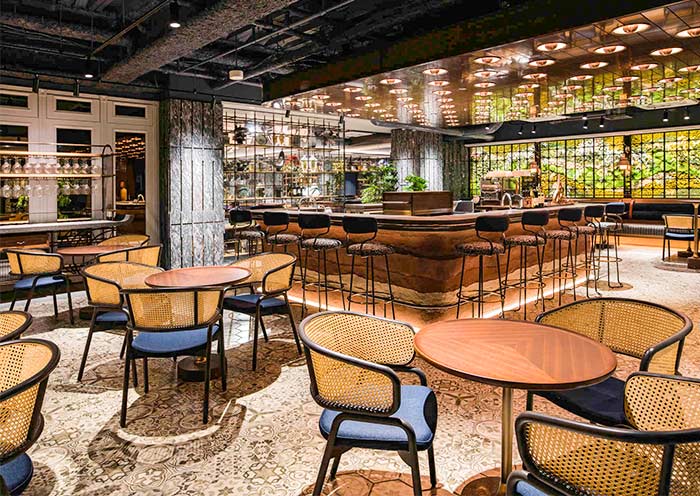
We carefully select accommodations across the five “Stans” to ensure both comfort and authenticity.
In Cities:
You will stay in well-located hotels (3-5 stars, with 4 stars recommended) - a mix of international chains and charming boutique hotels. All are clean, comfortable, non-smoking, and offer easy access to lively bazaars, shopping streets, and major attractions. Free Wi-Fi is available in most properties.
In Villages & Countryside:
Around the Seven Lakes, Pamir, and Issyk-Kul areas, accommodation is mainly in cozy family guesthouses, mountain lodges, or traditional yurt camps. Facilities are simple but authentic, letting you experience the local way of life. Yurt camps in Kyrgyzstan and Kazakhstan are usually shared or semi-private, with communal or partially private bathrooms. Nights can be chilly, but electric blankets or stoves are typically provided.
Camping Experience:
At places like the Darvaza Gas Crater, you will stay in fixed or mobile tents with basic shared facilities. Nights can be windy with significant temperature drops, so warm clothing is recommended.
Photo Gallery for This Itinerary
Latest Central Asia Tours Reviews from Our Customers

May
HK
Date of Experience: Sep 01, 2025
Tour Customized by: Rex
You May be Interested in This Tour: 14 Days Uzbekistan Tajikistan Turkmenistan: 3 Stans Tour, Silk Road & Desert Craters

Aisha
Malaysia
Asia Odyssey Travel delivered a fantastic Tajikistan tour from Samarkand! We loved the smooth cross-border logistics. We explored ancient Sogdian cities and the beautiful Fann Mountains. Our guide and driver were excellent, making the Northern Tajikistan discovery memorable and comfortable.
Date of Experience: Jun 21, 2025
Tour Customized by: Hannah
You May be Interested in This Tour: 5 Days Tajikistan Tour from Samarkand, Uzbekistan

Gobbles
Turkey
Our tour was smooth and efficient, with a knowledgeable guide and professional driver. The ancient wonders of Merv and Konye-Urgench (UNESCO sites) were breathtaking, and seeing the Door to Hell was surreal. Highly recommend!
Date of Experience: May 07, 2025
Tour Customized by: Nicole
You May be Interested in This Tour: 5 Days Classic Turkmenistan Tour: UNESCO Ancient Wonders & Door to Hell
Price: Request
(Based on a private tour for two people. Price varies depending on program, travel date, number of people.)
Free Enquiry! You don’t need to pay for the reservation.
- United States (+1)
- Australia (+61)
- Singapore (+65)
- Malaysia (+60)
- Philippines (+63)
- Canada (+1)
- Italy (+39)
- Indonesia (+62)
- United Kingdom (+44)
- Spain (+34)
- Mexico (+52)
- Hong Kong (+852)
- Thailand (+66)
- United Arab Emirates (+971)
- New Zealand (+64)
- South Africa (+27)
- Germany (+49)
- Brazil (+55)
- India (+91)
- France (+33)
- Vietnam (+84)
- The Netherlands (+31)
- Saudi Arabia (+966)
- Ireland (+353)
- Argentina (+54)
- Switzerland (+41)
- Romania (+40)
- Pakistan (+92)
- Japan (+81)
- Portugal (+351)
- Bangladesh (+880)
- South Korea (+82)
- Puerto Rico (+1)
- Türkiye (+90)
- China (+86)
- Belgium (+32)
- Qatar (+974)
- Greece (+30)
- Taiwan (+886)
- Austria (+43)
- Poland (+48)
- Israel (+972)
- Chile (+56)
- Sri Lanka (+94)
- Nigeria (+234)
- Peru (+51)
- Colombia (+57)
- Hungary (+36)
- Nepal (+977)
- Denmark (+45)
- Bulgaria (+359)
- Norway (+47)
- Slovenia (+383)
- Sweden (+46)
- Kuwait (+965)
- Costa Rica (+506)
- Ecuador (+593)
- Venezuela (+58)
- Malta (+356)
- Croatia (+385)
- Tunisia (+216)
- Czechia (+420)
- Mongolia (+976)
- Bahrain (+973)
- Mauritius (+230)
- Papua New Guinea (+675)
- Cambodia (+855)
- Dominican Republic (+1)
- Luxembourg (+352)
- Finland (+358)
- Guatemala (+502)
- Myanmar (+95)
- Maldives (+960)
- Slovakia (+421)
- Laos (+856)
- Serbia (+381)
- Brunei (+673)
- Oman (+968)
- Macao (+853)
- Panama (+507)
- Morocco (+212)
- Jordan (+962)
- Georgia (+995)
- Fiji (+679)
- Bolivia (+591)
- Lithuania (+370)
- Bahamas (+1)
- Cyprus (+357)
- Latvia (+371)
- Bhutan (+975)
- Iraq (+964)
- Iran (+98)
- Kenya (+254)
- Jamaica (+1)
- Zimbabwe (+263)
- Azerbaijan (+994)
- Uruguay (+598)
- Estonia (+372)
- Andorra (+376)
- Cameroon (+237)
- Ghana (+233)
- Kazakhstan (+7)
- Nicaragua (+505)
- Egypt (+20)
- Russia (+7)
- Albania (+355)
- Réunion (+262)
- Montenegro (+382)
- Algeria (+213)
- Afghanistan (+93)
- Martinique (+596)
- Uganda (+256)
- Honduras (+504)
- North Macedonia (+389)
- Trinidad and Tobago (+1)
- Suriname (+597)
- Antigua and Barbuda (+1)
- Zambia (+260)
- Ukraine (+380)
- Armenia (+374)
- Barbados (+1)
- Belarus (+375)
- Palestine (+970)
- Lesotho (+266)
- Moldova (+373)
- Ethiopia (+251)
- French Polynesia (+689)
- Gambia (+220)
- Guam (+1)
- Gibraltar (+350)
- Isle of Man (+44)
- New Caledonia (+687)
- El Salvador (+503)
- Comoros (+269)
- Seychelles (+248)
- Chad (+235)
- Samoa (+685)
- Cook Islands (+682)
- Palau (+680)
- Paraguay (+595)
- DR Congo (+243)
- Solomon Islands (+677)
